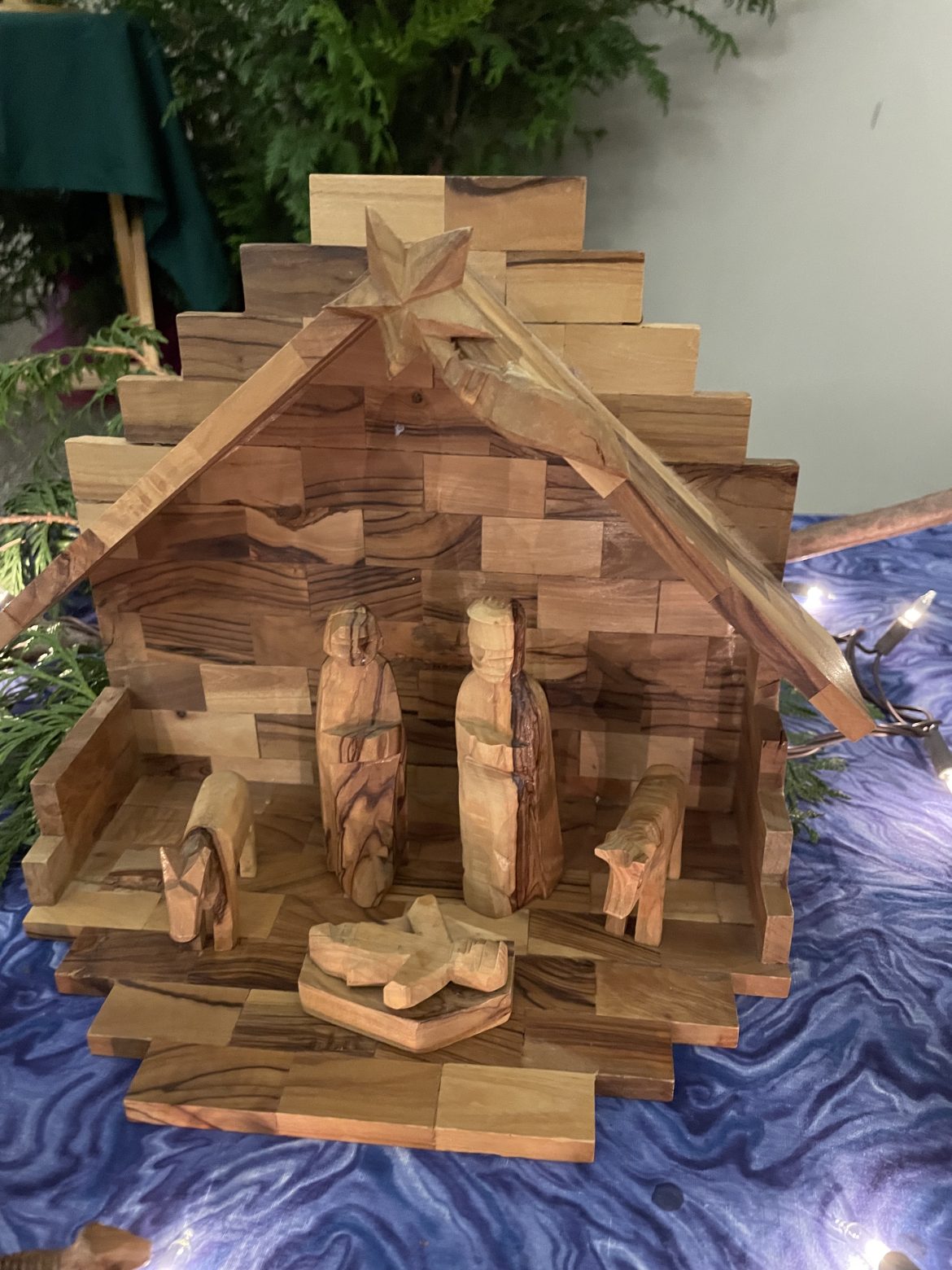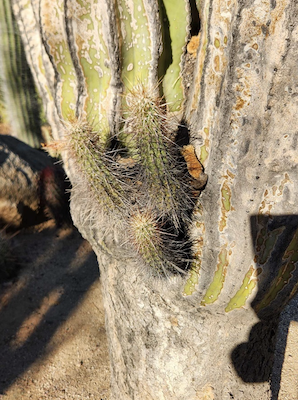There are many stories, indeed legends about the beloved and popular St. Nicholas. Most of these stories cannot be verified as very little is known about his life. What we do know is that Nicholas was born sometime in the third century near Myra in modern day Turkey. He became a Bishop of the church and may have been present at the Council of Nicaea in 325. He suffered torture and imprisonment during the persecution of Christians under the Emperor Diocletian and died around 342. Bishop Nicolas gave away much of his inherited wealth and became known for helping people in secret. Subsequently, he was honored as a saint in Constantinople in the sixth century. His feast day is December 6th. He is still celebrated as the patron of children and also seafarers and sailors. St. Nicolas, as a bearer of Christmas gifts to children, was brought to America by Dutch colonists in New York. In The Netherlands his name was Sinter Claus. Sinter Claus soon evolved into the popular name, Santa Claus. (Source: Lesser Feasts and Fasts, Episcopal Church Publishing, 1997) The cover photo is a figurine of The Netherlands’, Sinter Claus from The International Santa Claus Collection.
I was introduced to St. Nicholas by my parents at the age of five. Having learned about Santa Claus in kindergarten, I asked my parents about him. I was told that Santa was a lovely story but that he did not exist. I remember being very disappointed! However, my parents were quick to tell me about St. Nicholas.
On the night of December 5th, my parents began the Dutch tradition of having my brothers and me place a pair of empty shoes in front of our bedroom doors. We were told that St. Nicholas was coming. And, it came to pass! In the morning, on December 6, we found that our empty shoes were filled with gifts. Additionally, we also received a teaching from my father which I have never forgotten. He said, “On St. Nicholas Day we receive secret gifts but on Christmas Day we exchange gifts to celebrate the birth of Christ by loving and sharing with one another.”
No doubt this teaching stemmed from the fact that Bishop Nicholas traveled the countryside helping the poor and sick. One of the best-known stories about St. Nicholas is that he provided money for dowries for three poor sisters so that they could be married. Without the dowries, their father might have been forced to sell them into slavery or prostitution. For three nights, Bishop Nicholas left three bags of gold for each of the girls in front of their home. During the winter holidays, you might see little net bags of gold coins which are chocolates, being sold. St. Nicholas inspired this tradition.
From my perspective, delighting in receiving secret gifts on St. Nicholas Day and saving Christmas for Christ, is a good practice. I have handed down the tradition to my children and grandchildren. I enjoyed sharing the tradition of St. Nicholas in the congregations where I served as a priest and pastor before I retired. One year I was gifted with a hand-made St. Nicholas tree-top ornament. Bishop Nicholas in this image appears in the traditional church vestments and Advent colors. He has been placed at the top of my Advent Tree every year since 1988. It gives me great joy!

Perhaps because I did not grow up writing letters to Santa Claus or having my picture taken on his lap in stores, I confess that I was a bit smug about Santa Claus and the cultural hype around his celebration. Most ornaments on my tree are of a religious nature. I have a gift bag that reads, “Jesus is the Reason for the Season.” There are angels, images of Mary and Joseph, Jesus in the manger, even an ornament of St. John the Baptist. I was proud of my allegiance to Christ and the church during the season of Christmas.
However, a few years ago, I was gifted with many figurines from “The International Santa Claus Collection.” I learned that the tradition and celebration of St. Nicholas or Santa Claus at the time of Christmas exists in one form or another throughout the world. All of these cultural figures are devoted to the idea of gift giving, particularly to children. The figurines I own also include those who carry the message of love embodied by both older women and young girls as well as angels. I appreciate the fact that in some cultures, women bring the Spirit of Christmas love into people’s lives!

Perhaps the Spirit of God is more inclusive than we might imagine. Perhaps this same Spirit operates through the signs and symbols of many religious faiths and secular traditions. This is surely something to celebrate and give thanks for. In a world where it is often difficult to see love in action, I pause and pray with my International Santa Claus Collection. I give thanks that people across the globe in different cultures and circumstances might know and experience the transformative power of love through their many symbols of Christmas.
Ironically, the International Santa Claus Collection which I inherited does not include a representation of the traditional Santa Claus of the United States. However, having repented of my bias toward the American Santa Claus, I have purchased one and eagerly await his arrival so that I can add him to the collection.
In the Episcopal Church, a portion of the prayer that is offered for St. Nicolas on his feast day of December 6th, is a call for others to follow his example:
“May we be so inspired by the example of your servant Nicholas of Myra, that we never cease to work for the welfare of children, the safety of sailors, the relief of the poor, and the help of those tossed by tempests of doubt or grief.”
In honor of St. Nicholas this year, may we accept the invitation of Christ to perform some act of loving kindness for another in need, be it a financial gift or some other act of charity. An act of loving kindness can be as simple as greeting a stranger in a store or in the street with a kind word and a gracious smile. Jesus is indeed the reason for the season. Like St. Nicholas may we embody those words with concrete actions of love.
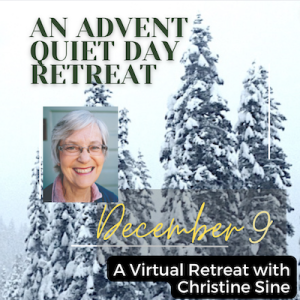
LAST FEW DAYS TO SIGN UP.
December 9, An Advent Quiet Day Retreat with Christine Sine.
Join Christine for a virtual retreat celebrating quiet anticipation and focusing on experiencing a meaningful Christmas. She will lead a morning of scripture reading and quiet reflection that will be for many of us a much needed oasis of quiet in the midst of this chaotic season. Register to participate here.
We are now into traditional Advent, and as I look at the remaining time until Christmas I am very grateful that I started November 15th for my Advent celebrations. This year traditional Advent is only 3 weeks long!!!
In some ways it seems very fitting. Many of us are very aware this year that there are many places in our world in which the light of God’s redeeming child still needs to be seen. So many places of darkness and chaos. The celebrations in Jerusalem and Bethlehem have been cancelled in solidarity with the people of Gaza. Many of the Christians of this area can trace their Christian heritage back to the days of Christ and their hearts ache, as do ours, for what is happening around the birthplace of Christ. As our pastor Megan Ramer commented on Sunday “This year there is no sanitized Bethlehem. The streets are ravaged and silent. How long must we wait for the liberating love of God to be fully expressed?” As we light our candles and meditate this Advent let us do so mindful of those for whom there seems to be little light during this Advent season.
In my Meditation Monday – Stretched I comment: “Life stretches us every step of the way if we will open ourselves to the pain and the grief of it, as well as to the joy and the wonder of it. To be stretched is to enlarge the capacity of our hearts for life with all its joys and sorrows.” And this year I think all of us are being stretched by the joys and sorrows around us.
Today I posted a new litany for the second week of Advent. It is adapted from one I wrote many years ago but I continue to refine and update in light of what is happening in the world around us. I hope you find it helpful. On Tuesday last week, I posted a new Advent prayer – Waiting in which I express more of my own longings and heartache during this year’s Advent.
In her Freerange Friday – Advent is the Invitation to Believe Lilly Lewin invited us to move slowly through the season of Advent and to enjoy the season of Christmas for a full twelve days, an important reminder as we rush towards Christmas. In his post Being a Host/Hostess, Ron Friesen shared his thoughts on hosting and being hosted during this season. As he said: “I pray that there will be warmth and healing found in all our occasions of celebration.” On Saturday Sheila Hamil gave us a break from Advent with her post Why Not Write a Memoir sharing about the memoir she has recently written which is available for free for all of us. What a wonderful gift for us this Advent season.
Godspacelight has many wonderful posts that you might like to check out during this Advent season. This week I wanted to highlight our Blue Christmas/Longest Day resources, already very popular this year. As well as that I suggest you check out some of the beautiful Advent prayers we have posted in the past – The Grace And Impatience to Wait by Walter Brueggemann and Gabriel’s Annunciation by Jan Richardson.
Our Advent Quiet Day Retreat is less than a week away. This is your chance to sign up and let go the rush and noise of the season, pause, refresh and renew yourself. It is an opportunity to sit in the stillness, breathe deeply and enter into an oasis of calm contemplation. Prepare for the real meaning of Christmas. December 9th will be a great time to pause, rest and refresh yourself as we move towards Christmas Day.
Today’s prayer is adapted from Sunday’s Advent message as well as an Advent meditation given by Cole Arthur Riley on Sunday evening.
This year our eyes are open,
No beautiful Christmas cards can dispel the truth.
There is no sanitized Bethlehem,
Only ravaged buildings and unlit streets.
How long must we wait
For the liberating and freeing love of God,
To be fully expressed?
How do we hold
The sorrows of longing,
With the joyful proclamation of Christ’s birth?
In the messiness of Christmas
Cultural festival compete with fervent faith.
What do we hold on to?
What do we embrace?
What do we reject?
What do we discard?
The world feels dim,
But we dream in the dark.
We claim the wild mystery of believing.
Hope unleashed amidst the heartrending brokenness.
Astounding beauty amidst the pain and suffering.
Christ will come.
His light will shine once more in Bethlehem.
God be with you this week as you await the coming of Christ.

LAST FEW DAYS TO SIGN UP.
December 9, An Advent Quiet Day Retreat with Christine Sine.
Join Christine for a virtual retreat celebrating quiet anticipation and focusing on experiencing a meaningful Christmas. She will lead a morning of scripture reading and quiet reflection that will be for many of us a much needed oasis of quiet in the midst of this chaotic season. Register to participate here.
I wrote this litany several years ago for the Advent devotional Waiting for the Light but decided this year that it needed some revision and updating. I am very conscious this year that in Bethlehem and Jerusalem the Christmas festivities have been cancelled and some of my friends have decided not to have Christmas light displays this year. Should we light Christmas lights? Should we celebrate? I feel that we should, affirming that God’s light does shine in the darkness, but also with the remembrance of those for whom the light of Advent is still very dim and hidden.
The waiting is long and it isn’t easy, but a premature birth is harder still.
Please feel free to use part or all of it. Just acknowledge where you found it. Thanks.
Litany for Second Sunday of Advent
In this Advent season we await the coming of Christ
Come, Christ of love, come, We await your coming.
We await the coming of God’s revealing light,
Come, Christ of love, come, We await your coming.
We await the coming of God’s saving hope,
Come, Christ of love, come, We await your coming.
We await the coming of God’s redeeming child,
Come, Christ of love, come, We await your coming.
(Pause for lighting of the Advent candles)
We wait for the God of life,
We wait for the Christ of love,
We wait for the Spirit of truth.
Come down, come in and dwell among us.
We wait in patient expectation for Christ’s coming,
We wait in hope for your promises to be fulfilled,
We wait in joy for your salvation to be fully revealed.
Come down, come in and dwell among us.
Come into the broken places of our world,
Come into Ukraine, Gaza, Sudan, and all other places of violence,
Come into your broken and devastated creation.
Come down, come in and dwell among us.
Come into our hearts that we may love you,
Come into our minds that we may know you,
Come into our lives that we may serve you.
Come down, come in and dwell among us.
John 1: 1-18 (The Voice)
Before time itself was measured, the Voice was speaking.
The Voice was and is God. This celestial Word remained ever present with the Creator;
His speech shaped the entire cosmos.
Immersed in the practice of creating,
all things that exist were birthed in Him.
His breath filled all things
with a living, breathing light—
A light that thrives in the depths of darkness,
blazes through murky bottoms.
It cannot and will not be quenched.
A man named John, who was sent by God, was the first to clearly articulate the source of this Light. This baptizer put in plain words the elusive mystery of the Divine Light so all might believe through him. Some wondered whether he might be the Light, but John was not the Light. He merely pointed to the Light. The true Light, who shines upon the heart of everyone, was coming into the cosmos.
He entered our world, a world He made; yet the world did not recognize Him. Even though He came to His own people, they refused to listen and receive Him. But for all who did receive and trust in Him, He gave them the right to be reborn as children of God; He bestowed this birthright not by human power or initiative but by God’s will.
The Voice took on flesh and became human and chose to live alongside us. We have seen Him, enveloped in undeniable splendor—the one true Son of the Father—evidenced in the perfect balance of grace and truth. John the Baptist testified about Him and shouted, “This is the one I’ve been telling you is coming. He is much greater than I am because He existed long before me.” Through this man we all receive gifts of grace beyond our imagination. You see, Moses gave us rules to live by, but Jesus the Anointed offered us gifts of grace and truth. God, unseen until now, is revealed in the Voice, God’s only Son, straight from the Father’s heart.
Child of promise come,
Revealer of God come,
Bringer of life come,
Come to the beaten and the battered,
To the despised and rejected,
To all in whom the divine image is still distorted.
We wait in joyful expectation.
Not for a distant emperor but for a helpless babe.
Not for a prince in a gold palace, but for a displaced and frightened refugee.
Not for a man of power, but for a vulnerable infant.
Come to those outcast like shepherds in the field.
Come to foreigners like Magi watching from afar.
Come to rich and poor, young and old, male and female.
We wait in hopeful anticipation.
Come and bless all creation with your love,
Bring salvation on the earth,
Rule with justice and in peace.
Come Child of promise, open the windows of our hearts.
Come Christ of compassion, open the doors of our homes.
Come Prince of Peace, open the pathways of our lives.
We wait with all the peoples of the earth,
Child of hope we will welcome your coming,
Christ of life we will welcome your coming,
King of glory we will welcome your coming.
Our Father who art in heaven hallowed be thy name. Thy kingdom come, thy will be done, on earth as it is in heaven. Give us this day our daily bread and forgive us our trespasses as we forgive those who trespass against us. Lead us not into temptation but deliver us from evil, for thine is the kingdom the power and the glory, for ever and ever. Amen.
Come Jesus Christ our redeemer and lead the captives from their prisons,
Come Christ our Saviour, for in you we trust O bringer of life.
Come to bring peace in the midst of war and chaos,
Come Christ Our Protector, for in you we trust O bringer of life.
Come to offer love in hearts filled with hate and anger.
Come Christ Lover of our souls, for in you we trust O bringer of life.
Come to offer comfort in the presence of mourning and death,
Come Christ Our Comforter for in you we trust O bringer of life.
Come to provide abundance in the midst of hunger and starvation,
Come Christ Our Provider for in you we trust O bringer of life.
Come to show forth justice for those who are oppressed and abused,
Come Christ our Righteous One for in you we trust O bringer of life.
Let us put on hope to guide us,
Love to surround us,
Joy to sustain us,
Peace to inspire us.
And clothe ourselves with Christ.
Amen.
by Christine Sine
This has been a stretching year. Can one grow in old age as much as when young I wonder? Can I continue to learn and expose myself to new and stretching ideas and thoughts? This year certainly suggests that I can.
I have been stretched by our attendance at the local Mennonite Church, by seeing Anabaptist theology lived out in a challenging and convicting way. The call for a just peace in our lives and in our world for all people and for all creation really resonates with me. I have been stretched by Drew Jackson’s poetry penetrating my heart, especially as I move slowly through Advent and towards the birth of Christ:
But God speaks through wombs,
Birthing prophetic utterances….
Enough
of this unbelieving religion
that masquerades as faith.
Divine favour is placed
on what we have disgraced.
Such profound and stretching word that keep resonating in my heart.
I am being stretched too by my own aging and the aging of those around me. Last week I lost a very dear friend – the first burn specialist to come to the mercy ship Anastasis, not just to do burn surgery but to bless us with gifts of computers, medical equipment, even generators. He and his wife embraced me as a “fifth daughter’ welcoming me into their family in a very special way.
I am being stretched too by adventures into new projects – a new podcast “The Liturgical Rebels” coming at the beginning of 2024.
Life stretches us every step of the way if we will open ourselves to the pain and the grief of it, as well as to the joy and the wonder of it. To be stretched is to enlarge the capacity of our hearts for life with all its joys and sorrows.
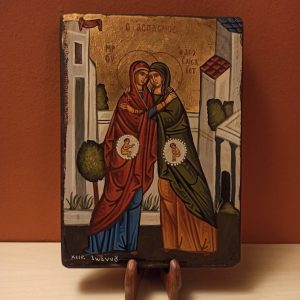
Mary and Elizabeth were both stretched during the events we remember at Advent. Their bodies were stretched as the babies grew within them and needed more space. Their faith in a just and righteous God must also have been stretched as they faced unexpected and challenging pregnancies.
Eve too must have felt very stretched during her first pregnancy too and she had no mother, no midwife, no one who had gone before to tell her what would happen. I love this picture by Sister Grace Remington which captures both the vulnerability and the hope of that stretching.
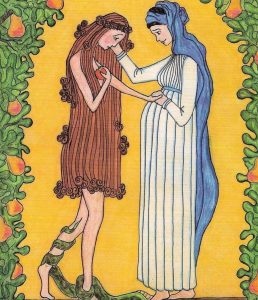
And the marks of that stretching would have remained on their bodies and in their hearts for the rest of their lives. And the hopes they cherished for their offspring would have lived with them too. Yet all of them saw at least one of their offspring die prematurely. Hope, vulnerability, stretching all embraced in their stories.
Pregnancy doesn’t only stretch a woman’s body. It does actually also stretches her heart to accommodate the needed increase in blood flow to nurture the baby.
Is my heart also being stretched by this Advent I wonder? Evidently just a few hours exercise a week makes all our hearts grow, so as I take more steps on the journey God sets before me, and keep up regular disciplines that exercise both my body, my mind and my soul, my heart grows too. A larger heart means more of the love of God to fill it. A larger heart means a greater ability to walk closer to the God of all creation, the Eternal One, the ever-present and caring One, the One who is revealed in the birth, life, death and resurrection of Jesus Christ.
Will you allow yourself to be stretched to hold more of God this Advent season?
Stretch me, God Almighty,
Enlarge my heart,
With the presence of your Son,
Jesus Christ our redeemer, our liberator,
The One who sets us free.
Stretch me with your presence within,
Enlarge my heart, my spirit,
My capacity to hold,
What you are growing within me.
Stretch me, God Almighty,
With a love for peace and justice and righteousness.
Stretch me with compassion and generosity and love.
Stretch me with a desire for more of you.
(c) Christine Sine

LAST FEW DAYS TO SIGN UP.
December 9, An Advent Quiet Day Retreat with Christine Sine.
Join Christine for a virtual retreat celebrating quiet anticipation and focusing on experiencing a meaningful Christmas. She will lead a morning of scripture reading and quiet reflection that will be for many of us a much needed oasis of quiet in the midst of this chaotic season. Register to participate here.
by Sheila Hamil
If you’re ever at a loose end, or feel directionless in today’s world, you could always try writing your life and faith story, if you’ve a tale to tell. Who else will tell it if you don’t, and it just might inspire someone in need of encouragement today?
I found myself in such a situation the Lockdown 2020. My husband and I would go out for the allotted daily exercise of one hour each morning; it was good to get some fresh air. I baked a lot, unfortunately we steadily gained weight, I looked for jobs to occupy me, but soon our home was spick and span, with every nook and cranny sorted! What else was there for me to do? My husband had many sporting programmes to keep him occupied, but nothing on television really excited me. I decided to pray about what else I could do to fill my time.
Two projects came to mind the next morning, which really took off, and I felt a new sense of purpose in my life! They were both an exhilarating ride, and hard work too, but so worth the effort.
My first project was to produce one video per day of all the music I’d previously written, along with some friend’s music too. I’ve already shared this project with you on Godspacelight. (see LOCKDOWN LEGACY)
The second project was to write a book of how I came to faith.
Had it not been for that period of enforced isolation, these two projects would not have seen the light of day.
My book began by way of my suggestion to our vicar, that it would be good to invite certain members of our church to produce a short video that could be shown on ‘Zoom’, (i.e. a video link), as to how they came to faith. I reasoned that this might encourage those who felt lonely, and isolated from church fellowship, during Lockdown. It would also bring them into the presence of God as lived out through the lives of fellow members of the congregation.
So, I started to write my faith story out, just in case I was invited to be one of the contributors. As it happened I wasn’t invited to do so, but once I had taken those first few steps of returning to my Sunday School days, as a young child in Howdon, Willington Quay in the early fifties, I became a ‘Forrest Gump’ who couldn’t stop running, (in my case writing!)
I found it so therapeutic, each day, to reflect on my entire life, and how faith in God had impacted it.
In time these memoirs grew into a huge 170,000+ word document, far too large to be a published book, but I thought it would be a super document to hand on to my family one day, because they would be able to see just how important my faith is to me, and why I believe so fervently, in God. It was also a way of showing how each song came to be written.
It was then, that someone suggested, ‘Why not condense your story, concentrate just on the faith part, and make it more accessible, because people don’t read books as huge as this?”
Taking their advice, I began the enormous task of chipping away at my recollections, trying to draw out the ‘faith parts’ within it, but I kept failing time and again. It became a burden, a dark cloud hanging over me, ever present, and never coming to completion.
It was when I sat listening to a sermon in church by Bishop John Pritchard, on Romans 8.31-39, that I suddenly realised I had set myself an impossible task with my book.
“Nothing can separate us . . !” he seemed to keep repeating! And, then I knew that to separate my faith from my life, was akin to separating the warp from the weft of a finished piece of weaving!
For to me, God, who is Father, Son and Holy Spirit, seems to be on every single page, for He has been my constant Provider, my Comforter, my Counsellor, my Guide and my closest Friend.
I shared my weaving image with the Bishop on leaving church.
Later that very same day I experienced an amazing coincidence.
I was looking up poems by Kate Compston for a completely different project, and as I opened one website called ‘Green Christian’, the first poem I saw by Kate was entitled:- ‘Weaver God’! It began:
Weaver-God, Creator, sets life on the loom,
draws out threads of colour from primordial gloom.
Wise in designing, in the weaving deft:
love and justice joined – the fabric’s warp and weft.
Wasn’t that amazing, after my revelation that morning?
It seemed to me that God was giving my original book project the go-ahead!
And so I began to edit and channel each part of my memoirs into one chapter per day, publishing it on my webpage, where it is all set out in order; and also on my Facebook where it became an interactive project as others began sharing their own precious memories too, which was so exciting. Carol Dixon another contributor to Godspacelight, posted her own thoughts regularly there, and I’m so grateful to her, for writing the ‘Foreword’, which you can read below.
It took me exactly 100 consecutive days (excluding Sundays), and it became a book with 100 chapters, and they’re all here for you to dip into.
This is the reason I haven’t contributed to Godspacelight in a while, as I had my own huge mountain to climb first, and now I’ve achieved it! And it’s free for you all to read!
I hope you get something out of this book to stir up your own memories, and I would love to hear from you if you care to write to sheilahamil@goodlemail.com
My webpage is:- (all resources here are absolutely free, no permission needed to any of the material in churches or youth clubs. I only print copyright to identify as the author.)
www.sheilahamil.co.uk
My book: “Put the hoover down go into the bedroom and pray”:-
https://sites.google.com/site/sheilahamilmusic/my-life-and-faith-story
My Lockdown Legacy videos:-
https://www.youtube.com/playlist?list=PLnUh_ZGnZNfUlV8HEyppRIv8FLBtyEY65
Please help yourself, and be inspired to write your own. You’ll not regret , however short it may be.
FOREWORD
by Carol Dixon
It is a privilege to be asked to write the Foreword to Sheila Hamil’s Autobiography.
Revd. Sheila Hamil would probably describe herself as an ordinary Christian yet in her writing we meet an extraordinary person whose honesty, integrity, compassion and total dedication to her faith, entwined with her deep love for her family, shines through every page. Her strong sense of social justice and care for the community is apparent throughout.
The early chapters, set in the 1950s and 60s, resonate with many of us of a certain age, sparking memories of our own youth and early adulthood yet her experiences are still relevant to young people today going through similar moral dilemmas and searching for answers to the bigger questions in life.
Sheila ‘s writing style invites the reader to enter into the experience she is describing as we join her and her husband Bob on their travels at home and abroad. Her love for their children and grandchildren and interest in the things they get up to are amusing and moving and her sense of fun is infectious. Her passionate concern for those in need is apparent both before and after she became a Priest in the Church of England following her ministry of song with United Folk. Above all her relationship with God runs through her reminiscences like a golden thread.
Each chapter is illustrated with photos and enhanced by her wonderful songs and Sheila’s own voice comes through as though she is personally accompanying those reading it.
I can highly recommend this interesting and uplifting story of Sheila Hamil’s life with its joys and challenges. It encourages the reader to reflect on their own lives past and present and leaves them wanting to read more. I look forward to Sheila’s next venture – whatever that might be.
Carol Dixon
Lay Preacher,
United Reformed Church & Hymn writer

December 9, An Advent Quiet Day Retreat with Christine Sine.
Join Christine for a virtual retreat celebrating quiet anticipation and focusing on experiencing a meaningful Christmas. She will lead a morning of scripture reading and quiet reflection that will be for many of us a much needed oasis of quiet in the midst of this chaotic season. Register to participate here.
Welcome to December! Welcome to the traditional season of Advent that begins this Sunday!
Did you grow up celebrating the Advent season? Did you not know anything about it?
As a child, we had the Advent Wreath at church that a family would light each of the four weeks of Advent. And my favorite service was the “Hanging of the Greens” at the beginning of December where we would process in with the greenery as we sang Christmas Carols. Kids of different ages carrying in the wreaths and garland during the candle light is still a fond memory.
There was an Advent devotional that people from church wrote each year, this was way before the internet and how many resources were available on line! Volunteers would take a passage or a verse from the Bible and reflect on the theme. But my favorite Advent memory was dressing up for the Live Nativity scene the youth group hosted each year. For one night only, my friends and I were a life size diorama of the birth of Jesus, including live animals that my dad usually helped acquire and bring over to the church. I remember that it was a lot colder in Nashville back then having to bundle up under the costumes!
When I started working as the Spiritual Formation Director at an Episcopal Church, I learned that the season of Advent is beginning of the NEW Church Year! It’s the time we get to start fresh and the lectionary (series of readings ) begins again with a new gospel. Prior to this staff job, I had been a part of more contemporary churches that didn’t do Advent they just jumped right into Christmas like everyone else. At my Episcopal Church, we didn’t even sing any Christmas carols in big church until Christmas Eve! We sang ” Oh Come o Come Emmanuel” at the end of service each week and we had wreaths with purple ribbons ( the liturgical color of Advent) but it wasn’t until Christmas Eve that the church came alive with color …poinsettias and red ribbons and the carols …because on the Church Calendar, the season of Christmas begins on Christmas and goes until Epiphany on Jan. 6th…thus the 12 Days of Christmas are actually AFTER the big day we all focus on so intensely.
And that is an Invitation to move slowly through the season of Advent and to enjoy the season of Christmas for a full twelve days…especially good for those of us who work on a church staff!
What if we view all of Advent as a series of Invitations from God?

I’ve been asking our house church, thinplace, about God’s invitation to each of us this Advent.
I’ve been listening myself for God’s invitation ….to slow down, to pay attention. To empty my hands of too many packages so I can receive the NEW gifts God has for me.
I love Advent because it’s the beginning of the NEW YEAR on the church calendar! We get to start fresh! Begin Again! And this New Year invites us to reflect on the birth of God with us!
This week we have an Invitation to BELIEVE …Invited to believe in the incarnation
Invited to believe that we are not alone
Invited to believe that God is with us
Invited to believe that God sees us as we are and knows our hearts
What is preventing you from Believing this Advent? Pain, Politics, Anxiety, Busyness, Exhaustion? Talk to Jesus about where you really are today.
When I think of my need to Believe …I realize that my need to believe means I need to acknowledge just how much fear and anxiety I carry around with me everyday. It also leads me to see how many times in the Christmas story we are invited to FEAR NOT!

Zechariah wasn’t expecting and Angel
Mary wasn’t expecting an angel
Joseph wasn’t either.
They ALL found out that lives were going to change in radical ways
They never would be the same!
Be not afraid your prayers have been heard!
Be not afraid you are favored in God’s eyes!
Fear not God is up to something BIG!
BELIEVE!

BELIEVE!
13-15 But the angel reassured him, “Don’t fear, Zachariah. Your prayer has been heard. Elizabeth, your wife, will bear a son by you. You are to name him John. You’re going to leap like a gazelle for joy, and not only you—many will delight in his birth. He’ll achieve great stature with God. LUKE 1
13-15 But the angel reassured him, “Don’t fear, Zachariah. Your prayer has been heard. Elizabeth, your wife, will bear a son by you. You are to name him John. You’re going to leap like a gazelle for joy, and not only you—many will delight in his birth. He’ll achieve great stature with God.
30 But the angel said to her, “Do not be afraid, Mary; you have found favor with God.
LUKE 1:30
20 But after he had considered this, an angel of the Lord appeared to him in a dream and said, “Joseph son of David, do not be afraid to take Mary home as your wife, because what is conceived in her is from the Holy Spirit. 21 She will give birth to a son, and you are to give him the name Jesus,[f] because he will save his people from their sins.” Matthew 1:20
What are your fears right now?
What are you afraid of, what are you anxious about as this new season begins?
What is blocking your ability to BELIEVE? Talk to Jesus about this. He isn’t afraid of your unbelief and knows you and loves you as you are!

This week we have an Invitation to BELIEVE …What will help you open and receive that Invitation? Maybe you need to create a BELIEVE SIGN or a BELIEVE ROCK to put by your desk.

Maybe you need help believing at all this year. Maybe the Believe sign in your heart has been torn apart and is in pieces.
That’s really OK. God can use those broken pieces. God is good with putting broken pieces back together and making an even more beautiful thing! Think Kintsugi! (see video below) The broken pot is put together with Gold and is seen as much more valuable because it is broken! And the BELIEVE sign in the series Ted Lasso is put back together in the same way!
The song at the end of this post is “Lord Remind Me” and it is helping me receive God’s Invitation to Believe this Advent. Also I am continuing to start my day with all the things I am grateful for from the day before and this is helping me to BELIEVE. Ask Jesus to show you what things will help you BELIEVE this Advent and open that invitation to FEAR NOT!
“But you, Israel, are my servant. You’re Jacob, my first choice, descendants of my good friend Abraham. I pulled you in from all over the world, called you in from every dark corner of the earth, Telling you, ‘You’re my servant, serving on my side. I’ve picked you. I haven’t dropped you.’ Don’t panic. I’m with you. There’s no need to fear for I’m your God. I’ll give you strength. I’ll help you. I’ll hold you steady, keep a firm grip on you.Isaiah 41:10

Ted Lasso finale
On a recent visit to the Desert Botanical Garden in Phoenix, AZ, I discovered an interesting phenomenon. There were Giant Cardonas who had various cacti growing in their crevices. The plants were hosts to these plants. The host plant served as a safe place for the seed to grow and mature. The hosted plant flourished in the loving crevice of its host.
This observation made me think of the holiday season we are celebrating. There will be large gatherings of families and friends and someone will be the host of the event.
Over the years June and I have been hosts to several of these gatherings. One year our table was surrounded by a homeless man, a refugee family from Congo, a refugee family from Afghanistan, another refugee family from Liberia, a Jewish man who lived down the street, and a man from a nursing home in a wheelchair. There was a laughter, exchanges of lived experience,
gratitude for the fellowship of soul and spirit. What a joy to host these people!
For most of our married lives, June and I lived great distances from our families during the holidays. There have also been many holidays we were the hosted. People graciously invited us into the safety and warmth of their homes and hearts.
 In Jesus’ life there were times he was the gracious host and other times he was the invited guest or the hosted one. Jesus was often invited by those who followed him to join them for a meal: one example is in
In Jesus’ life there were times he was the gracious host and other times he was the invited guest or the hosted one. Jesus was often invited by those who followed him to join them for a meal: one example is in
(Mark 2:15-17)
15 While Jesus was having dinner at Levi’s house, many tax collectors and sinners were eating with him and his disciples, for there were many who followed him. 16 When the teachers of the law who were Pharisees saw him eating with the sinners and tax collectors, they asked his
disciples: “Why does he eat with tax collectors and sinners?”
17 On hearing this, Jesus said to them, “It is not the healthy who need a doctor, but the sick. I have not come to call the righteous, but sinners.”
At Jesus’ last meal with his disciples before his crucifixion, he was the host of the Passover meal:
Luke 22:7-16, New International Version
7 Then came the day of Unleavened Bread on which the Passover lamb had to be sacrificed. 8 Jesus sent Peter and John, saying, “Go and make preparations for us to eat the Passover.”
9 “Where do you want us to prepare for it?” they asked.
10 He replied, “As you enter the city, a man carrying a jar of water will meet you. Follow him to the house that he enters, 11 and say to the owner of the house, ‘The Teacher asks: Where is the guest room, where I may eat the Passover with my disciples?’ 12 He will show you a large room
upstairs, all furnished. Make preparations there.”
13 They left and found things just as Jesus had told them. So they prepared the Passover.
14 When the hour came, Jesus and his apostles reclined at the table. 15 And he said to them, “I have eagerly desired to eat this Passover with you before I suffer. 16 For I tell you, I will not eat it again until it finds fulfillment in the kingdom of God.”
When we talk about hosting and being hosted, we are talking about hospitality. What an interesting word, hospitality. Say it out loud slowly. Did you notice that it is talking about a hospital. What happens in a hospital? People are welcomed to experience healing and recovery.
This season you may be hosting and being hosted. I pray that there will be warmth and healing found in all our occasions of celebration.
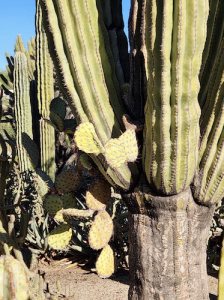
Photos and writing by Ron Friesen, who resides in Glendale, AZ, is a pastor, a certified Spiritual Director and follower of Jesus who invited all to his table.

December 9, An Advent Quiet Day Retreat with Christine Sine.
Join Christine for a virtual retreat celebrating quiet anticipation and focusing on experiencing a meaningful Christmas. She will lead a morning of scripture reading and quiet reflection that will be for many of us a much needed oasis of quiet in the midst of this chaotic season. Register to participate here.
As an Amazon Associate, I receive a small amount for purchases made through appropriate links.
Thank you for supporting Godspace in this way.
When referencing or quoting Godspace Light, please be sure to include the Author (Christine Sine unless otherwise noted), the Title of the article or resource, the Source link where appropriate, and ©Godspacelight.com. Thank you!


